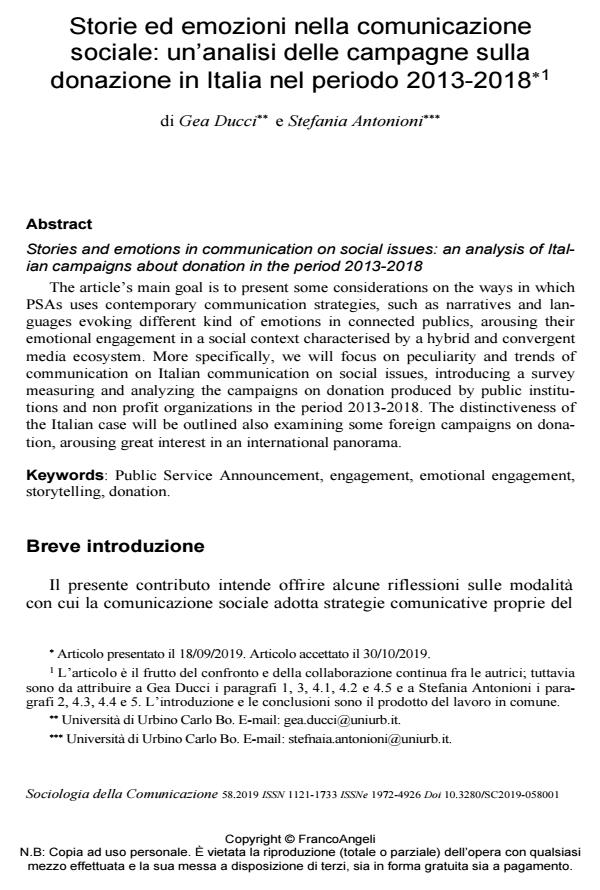Storie ed emozioni nella comunicazione sociale: un’analisi delle campagne sulla donazione in Italia nel periodo 2013-2018
Titolo Rivista SOCIOLOGIA DELLA COMUNICAZIONE
Autori/Curatori Gea Ducci, Stefania Antonioni
Anno di pubblicazione 2020 Fascicolo 2019/58
Lingua Italiano Numero pagine 22 P. 5-26 Dimensione file 750 KB
DOI 10.3280/SC2019-058001
Il DOI è il codice a barre della proprietà intellettuale: per saperne di più
clicca qui
Qui sotto puoi vedere in anteprima la prima pagina di questo articolo.
Se questo articolo ti interessa, lo puoi acquistare (e scaricare in formato pdf) seguendo le facili indicazioni per acquistare il download credit. Acquista Download Credits per scaricare questo Articolo in formato PDF

FrancoAngeli è membro della Publishers International Linking Association, Inc (PILA)associazione indipendente e non profit per facilitare (attraverso i servizi tecnologici implementati da CrossRef.org) l’accesso degli studiosi ai contenuti digitali nelle pubblicazioni professionali e scientifiche
The article’s main goal is to present some considerations on the ways in which PSAs uses contemporary communication strategies, such as narratives and lan-guages evoking different kind of emotions in connected publics, arousing their emotional engagement in a social context characterised by a hybrid and conver-gent media ecosystem. More specifically, we will focus on peculiarity and trends of communication on Italian communication on social issues, introducing a survey measuring and analyzing the campaigns on donation produced by public institu-tions and non profit organizations in the period 2013-2018. The distinctiveness of the Italian case will be outlined also examining some foreign campaigns on dona-tion, arousing great interest in an international panorama.
Parole chiave:Public Service Announcement, engagement, emotional engagement, storytelling, donation.
Gea Ducci, Stefania Antonioni, Storie ed emozioni nella comunicazione sociale: un’analisi delle campagne sulla donazione in Italia nel periodo 2013-2018 in "SOCIOLOGIA DELLA COMUNICAZIONE " 58/2019, pp 5-26, DOI: 10.3280/SC2019-058001